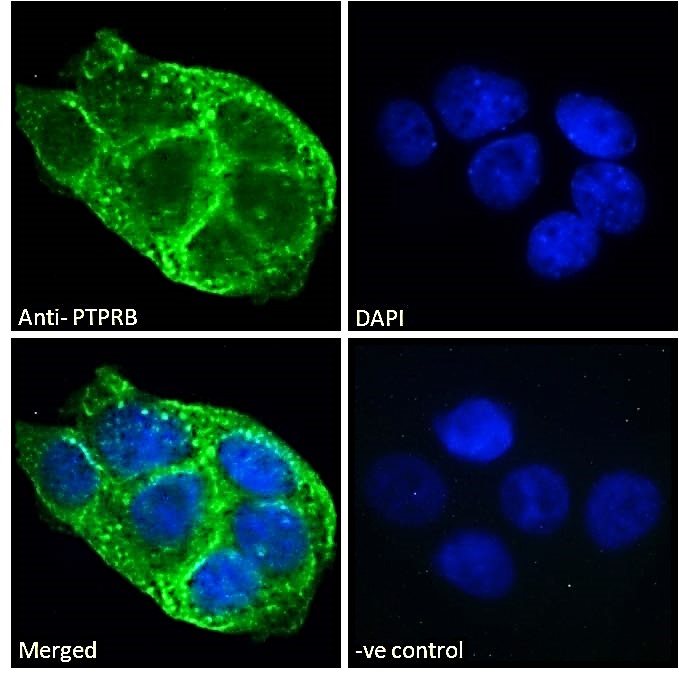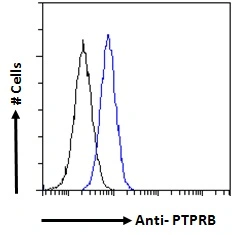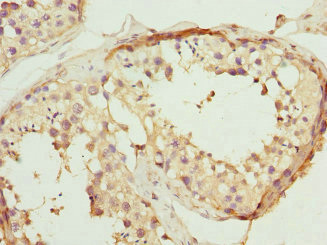PTPRB antibody [122.2]
GTX80343
ApplicationsImmunoFluorescence, ImmunoPrecipitation, Western Blot, ImmunoCytoChemistry
Product group Antibodies
ReactivityRat
TargetPTPRB
Overview
- SupplierGeneTex
- Product NamePTPRB antibody [122.2]
- Delivery Days Customer9
- Application Supplier NoteRecommended Starting Dilutions:Use between 1:1000-1:2500Optimal dilutions should be determined experimentally by the researcher.
- ApplicationsImmunoFluorescence, ImmunoPrecipitation, Western Blot, ImmunoCytoChemistry
- CertificationResearch Use Only
- ClonalityMonoclonal
- Clone ID122.2
- Concentration1 mg/ml
- ConjugateUnconjugated
- Gene ID5787
- Target namePTPRB
- Target descriptionprotein tyrosine phosphatase receptor type B
- Target synonymsHPTP-BETA, HPTPB, PTPB, R-PTP-BETA, VEPTP, receptor-type tyrosine-protein phosphatase beta, VE-PTP, protein tyrosine phosphatase, receptor type, beta polypeptide, vascular endothelial protein tyrosine phosphatase
- HostMouse
- IsotypeIgM
- Protein IDP23467
- Protein NameReceptor-type tyrosine-protein phosphatase beta
- Scientific DescriptionThe protein encoded by this gene is a member of the protein tyrosine phosphatase (PTP) family. PTPs are known to be signaling molecules that regulate a variety of cellular processes including cell growth, differentiation, mitotic cycle, and oncogenic transformation. This PTP contains an extracellular domain, a single transmembrane segment and one intracytoplasmic catalytic domain, thus belongs to receptor type PTP. The extracellular region of this PTP is composed of multiple fibronectin type_III repeats, which was shown to interact with neuronal receptor and cell adhesion molecules, such as contactin and tenascin C. This protein was also found to interact with sodium channels, and thus may regulate sodium channels by altering tyrosine phosphorylation status. The functions of the interaction partners of this protein implicate the roles of this PTP in cell adhesion, neurite growth, and neuronal differentiation. Alternate transcript variants encoding different isoforms have been found for this gene. [provided by RefSeq, May 2011]
- ReactivityRat
- Storage Instruction-20°C or -80°C,2°C to 8°C
- UNSPSC12352203





